So You Have COVID, Now What?
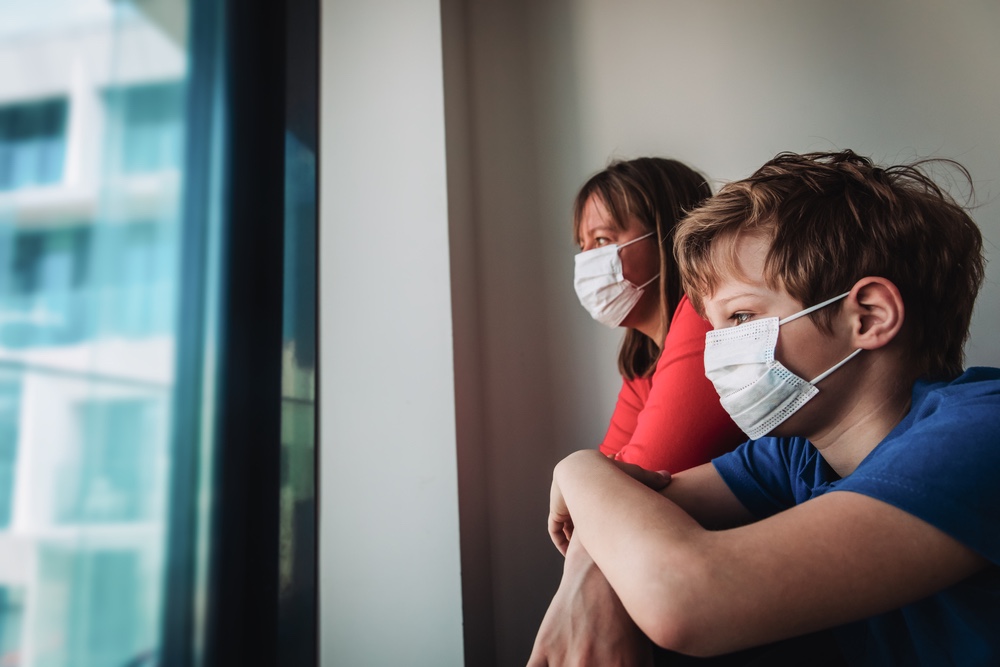
Right after the holidays, many of us at Lucie’s List had a revelation: we all knew a friend, a neighbor, or a fellow parent who came down with COVID, and it made us think: What do parents do when they get sick? And what does it really look like when a whole family is exposed?
Not only are you ill (to varying degrees), but there are logistics. It turns out, it’s not as easy as the 14-day quarantine we all keep hearing about. Living through COVID is different for a family than it is for single individuals or even childless couples.

Though we’ve seen a substantial decrease in cases over the last week or so, we also know the new, more transmissible variants are already spreading in the US, and the reality is that there are going to be many more COVID cases in the months to come before we can achieve widespread vaccination.
And many of those cases are going to be parents. Parents of babies and young children. Parents like us, or you, or your friend or sibling or neighbor.
And unfortunately there’s almost no useful information “out there” to guide parents on how to manage an in-house case of COVID. After all, if we fall ill to this thing, we can’t hire a sitter, send the kids to a neighbor’s house, or (especially!) call in the grandparents. The overall inability to get childcare help from the outside world can make the whole situation 10x harder.
We set out to demystify — and destigmatize — this ordeal for parents who may experience it and hope that this piece offers some support, fellowship, and practical information for anyone in this unwelcome situation.
I conducted independent research, interviewed health professionals (including a practicing pediatrician), and spoke with numerous real moms who have suffered the nightmare of COVID in their homes. For the sake of anonymity, I haven’t used any of their names in this piece, and some of the responses you’ll read are amalgams based on their similar testimonies.
Many thanks to all of our readers who gave your time and shared your story for the benefit of others.
This article consists of three sections, all of which stem directly from the firsthand conversations I had with parents: Things to Know at the Outset, Strategies for Getting Through the Day-to-Day, and Managing Mental Health.
In the meantime, keep up to speed on what’s happening with vaccinations in your state — and pre-register if you can.
Things to Know at the Outset:
1. Understand the timeline.
Almost universally, moms told me they were naive about the timeline for quarantine. Most Americans are at least familiar with the general 10-14 day quarantine time frame from state health departments and the CDC, but the reality is that when a family member in the household comes down with COVID, it’s very likely that quarantine will last at least one month, and possibly longer.
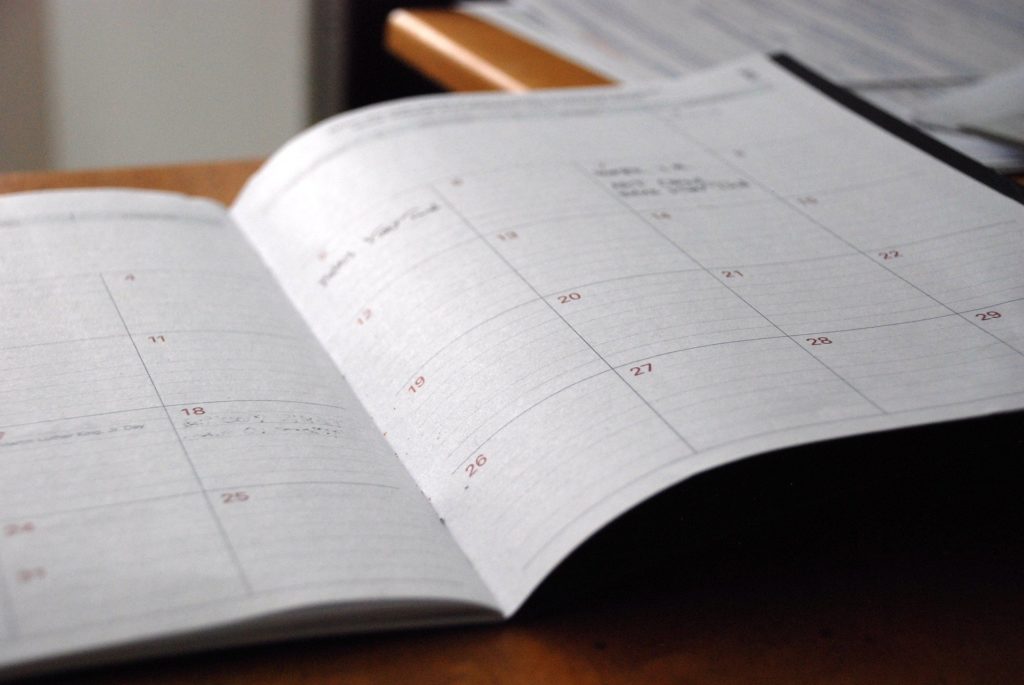
“Household exposure is considered an ongoing exposure.”
This is because of the “rolling diagnosis” phenomenon (this is not a real term, BTW, I made it up) — in which members of a family receive staggered diagnoses over time.
Perhaps a child tests positive for COVID, then a parent starts developing symptoms and is diagnosed a few days later, another parent a few days after that, and so on… If various members of your household contracted COVID, everyone would need to quarantine from the date of the last diagnosis.
Alternatively, if some individuals in the family never contract the virus (or simply never take and thus never receive a positive test result), this extends the quarantine from the last possible day of their potential exposure.
For example — say family member A tests positive on day 1, then family member B tests positive on day 7, and family member C tests positive on day 12. Family member D is considered exposed throughout this whole time, and so would need to begin their own quarantine on the last day of C’s own isolation (which would be ~day 29)… you can see how this could really stretch out.
Yes, depending on where you live and/or your children’s school’s policies, the required length of quarantine after an exposure can be up to twenty days — after everyone is feeling well and COVID-free.
For most of the moms I spoke with, this was a 4-6 week ordeal.
You can see all the specifics on the CDC quarantine guidelines (for a potential exposure, which includes household exposure) here and isolation guidelines (for cases) here. Our friend Dr. Darria, an ER physician and the author of Mom Hacks, also talks about quarantine, isolation, and testing requirements — plus much more — here.
2. There is the pediatrician’s recommendation… and then there is reality.
There are various professional advisements and recommendations as to how to handle a case of COVID in the household — they come from the CDC, state health departments, Johns Hopkins, the Cleveland Clinic, and elsewhere — but none of them necessarily take into account what the experience is actually like when you have little kids.
Some women told me that they received two separate talks from their family’s pediatrician’s office: the “here’s the technical recommendation” talk and then the “in reality, do whatever you can” talk.
The gist of the technical recommendation bit is this: ideally, family members with COVID would self-quarantine within the home, or else isolate and social distance as much as possible if a true quarantine is not an option. It’s best to wear masks inside, use separate bathrooms, sleep separately, and eat separately, too.
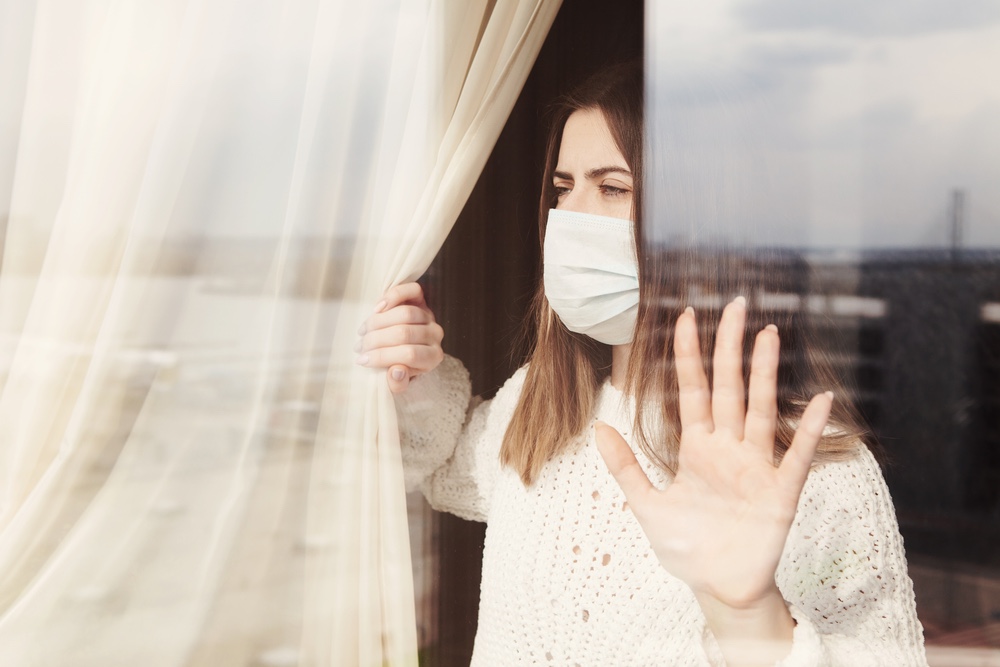
It goes without saying that everyone is going to have a different approach to this — and it greatly depends on who’s living under your roof (among other things). But the moms I spoke with stressed that they figured out what was going to work for them (see #3, below) and *tried not to look back.
**It also goes without saying certain public health considerations are non-negotiable… what we are talking about in this article is how to handle the strategy inside your own home.
Getting By
I spoke with a close friend and practicing pediatrician about this problem, and she agreed that the CDC guidelines don’t sufficiently address the fact that many families simply may not be able to implement their advice.
Generally speaking, she said, she would advise families with a household diagnosis — regardless of the presence/absence of symptoms — to look at the CDC recommendations and implement as many of them as they can, whether that’s only one/two, or all of them. For any given family, this decision-making process is going to vary according to a bevy of different circumstances (including, of course, your children’s ages).

Here are the CDC guidelines, FYI:
- Physical distance (6 ft) inside the home — whether and to what extent you can actually do this safely depends on your child’s age and independence level. “Obviously if a parent has infants, toddlers, or young school age kids at home, this won’t be safe or feasible,” my friend said. But for older children or teenagers, it may be doable;
- If it’s possible to designate a separate bathroom for COVID-positive individuals (regardless of how you approach physical distancing^^), do so;
- Wear face masks inside the home (everyone older than 2 years);
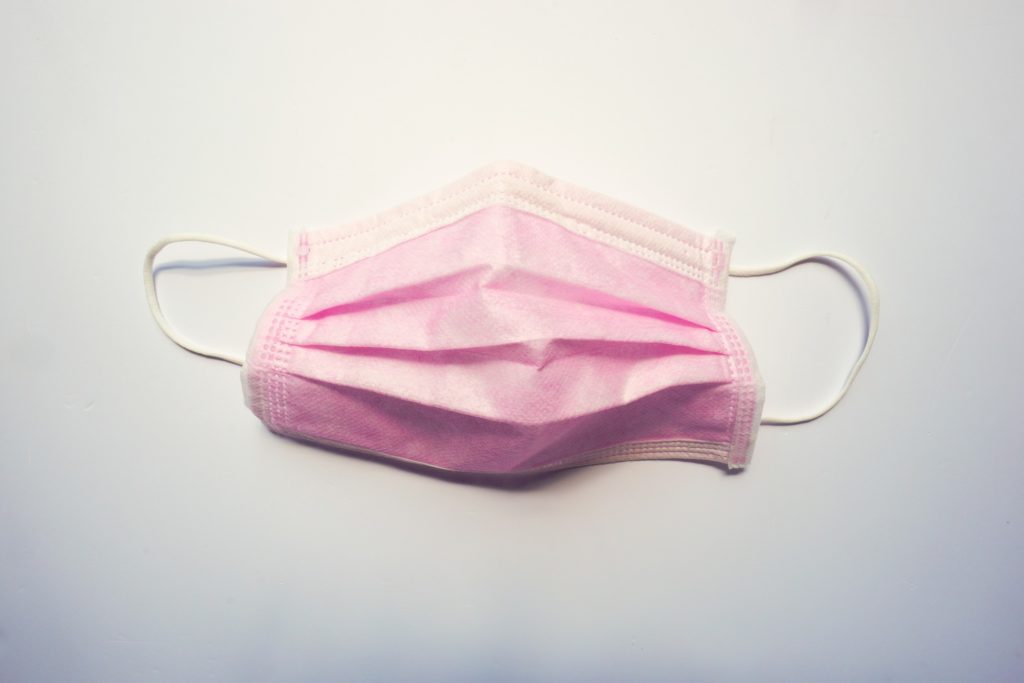
- Improve ventilation with things like opening the windows in shared spaces;
- Handwash — we know, you know, you know, you know…;
- Disinfect high touch surfaces;
- Take food prep precautions — wash hands and wear a mask when preparing food for your kids (Dr. Darria separately explained to me that meals are likely the biggest vulnerability, in fact);
- Monitor symptoms — check 1-2x daily.
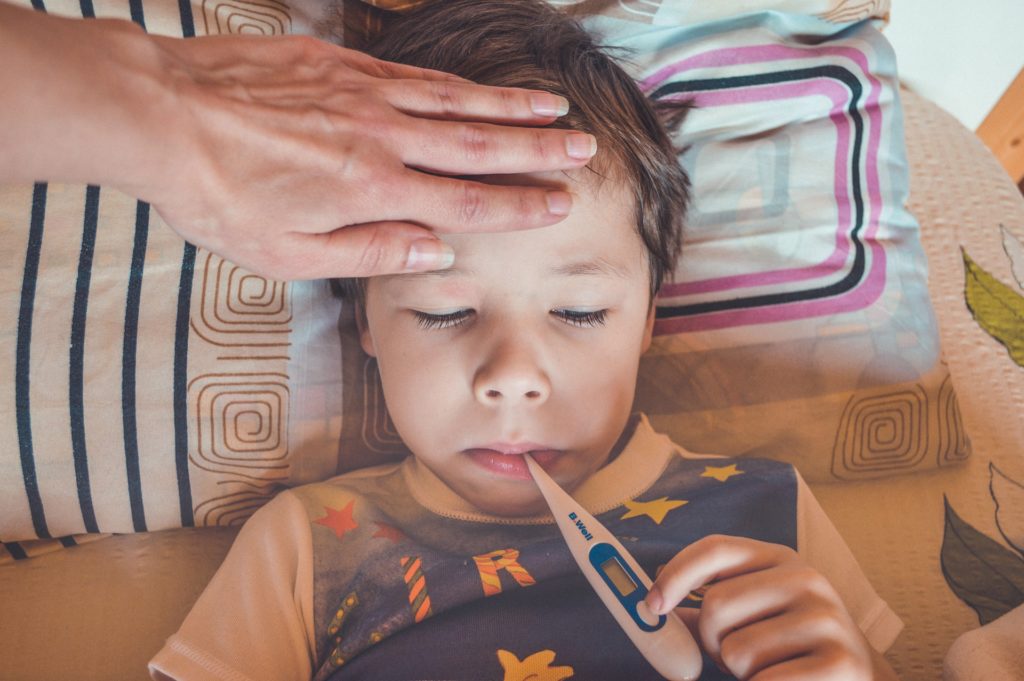
*The idea here is for families to implement whichever of these measures they can with the goal of reducing household transmission. And one other thing to think about with respect to this goal: even if everyone in your family has already been exposed, it’s still worth it to minimize additional exposure to the extent that you can.
But let’s be clear — many of these items, besides being difficult if not impossible for families with babies and young children, are also primarily available to two-parent families in upper-economic brackets who also have job security and job flexibility. This is yet another reason why social justice — or, in this case, the lack thereof — is such an important aspect of individual and public health.
Household Transmission
By the way, household transmission rates vary widely across studies.
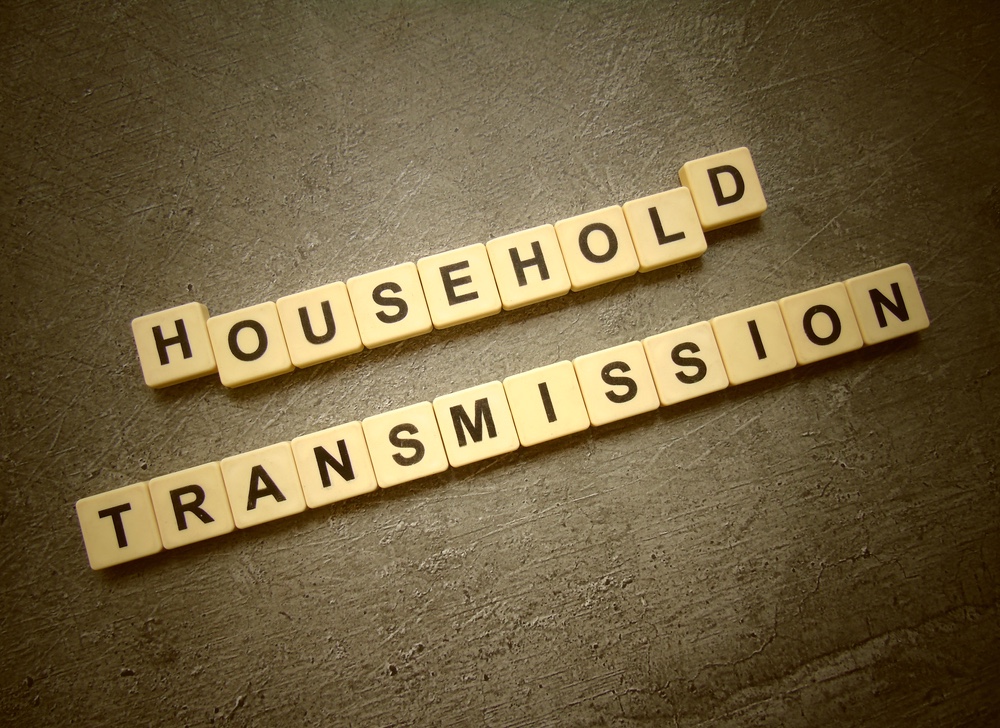
An ongoing study from the CDC that entails daily testing of all household members suggests a secondary infection rate of 53%; a majority (75%) of secondary infections happened within five days of the first family member’s illness. (You can read a synopsis of that project at CNN.) But some projects in other countries (with various differences in study design and methodologies) have reported much lower rates.
A recent review of studies that investigated household transmission of COVID found that “on average, once the first person in a previously healthy household becomes infected with SARS-CoV-2, the others have a roughly 17% chance of being infected by that person.” A few things to note here: 1) This 17% risk DOES reflect protective strategies like masking, distancing, etc., so it’s possible that this number would be higher in the absence of any mitigation strategies; 2) The studies involved only accounted for people who transmitted from that “case zero” in the house — not a second or third case… though, who knows how they determined this piece… ; and, 3) studies where families were tested more frequently documented higher rates of household transmission.
A subsequent review analysis in JAMA found an estimated rate of 16.6%. Chances of transmission were higher if the primary case was symptomatic, and secondary rates were also higher to adults than to children.
Bottom line: it’s fair to say that household transmission is somewhat likely, though certainly not an inevitability.
Real World Experience
→ We have more on mucking through all the sh*tty decisions with respect to which guidelines to follow below, but for now, here are some real decisions and thoughts on these issues from moms who went through this:
- “When I got my positive test, the RN I saw at urgent care said it would be best if I isolated as much as possible, wore my mask around the house, slept by myself, etc. But she also said that my husband and son had both been exposed, so it really didn’t matter all that much.”
- “I’ll be honest — we weren’t very diligent with mitigation strategies like distancing, isolation, and masking in the house. It’s just the nature of COVID that you don’t know the exact minute you’re exposed, so by the time you do, you’ve already been around your family… I did avoid sharing cups and food, and washed my hands more often, and tried to not share kisses on the face.”
- “While waiting for my test results, I wore a mask around my 9-month-old daughter and husband. Once I received the positive result, we made the decision for me to self-isolate while my husband and our daughter got tested. They both ended up testing negative! So I stayed self-isolated for a week until I was considered cleared… The hardest part was being away from my daughter and husband for so long. There would be times I would try to peel out into the living room to watch our daughter play and she would see me and crawl towards me, but I would have to shut the door before she got there. It was so heartbreaking!“
- “I think it’s unrealistic to expect parents, especially mothers with no partners to help, to isolate from their kids for two weeks. It’s just not feasible.”
- “We masked in the house for about 7 or 8 days until we had a second positive test. After that, we didn’t totally see the point anymore.”
- “We had COVID hit our house twice. Our first go round was when my 5-year old son tested positive… I was terrified to see that lab result… We managed to devise a plan to keep me and our youngest segregated [since we both share a preexisting health condition which put us at greater risk for complications]… my older son and my husband hunkered down in the basement for quarantine, while I stayed upstairs with our youngest. Being on duty without reprieve from an 18 month old at the time was exhausting…
Our second go round, it was mom who started a chain reaction… It hit me hard, and for three days I was out of commission. Knowing that our older son was within his 90-day window from his positive test I was able to help him when my fatigue wasn’t too much, but we still kept me segregated from the youngest.”
- After isolating and distancing from one of her children while she was positive, one mother told me that when her son’s test came back positive she was “almost relieved that I could be with him.”
“Our pediatrician suggested isolating from our youngest [who had tested negative] — but where could we go?”
3. Do what you and your family need to do.
Precisely because the information and advice on how to handle this situation is all over the place (remember, this virus is still very new, and doctors and scientists still have a lot to learn), everyone I spoke to stressed that it was important to “do you” — to do what’s right for your family. And as parents, we have at least some muscle memory for “getting through it.”
- “We just struggled through it… I mean, there are no options.”
- “You do what you have to do as a parent… you get through it.”
- “You have to balance what everyone needs.”
- “At the end of the day, remember that you are doing the best you can through a really difficult time. Follow your gut to keep your family sane and as safe as possible.”
“COVID parenting is survival parenting.”
Join our Award-Winning Email List:
4. It can be scary — breathe deep.
Many of the moms I spoke with talked about the intense fear of the uncertainty they felt both throughout COVID’s presence in their homes as well as after (though some said there was a certain measure of relief at the “end” of things, especially if everyone had contracted it and recovered).
“The thing we had tried so hard to keep out of our home was here and my mind instantly began to run through any and all scenarios, including the most grim.”
Women told me they worried about if and when others in their home would contract COVID; about making phone calls to tell coworkers, friends or family they may have exposed; about how long it would last; and especially about what was going to happen — whether they or their partners or children might suddenly take a turn for the worse — and what would happen if they did.
For some, the fear of being hospitalized or dying was always in the back of their mind.
One mom said, ”the nurse asked me if I could get a full breath… and after thinking and worrying that I might not be able to, at some point, it really got into my head, and then I started having trouble breathing because I was so worried!”
Lessons from the Trenches: Getting Through The Day-to-Day
During our interviews, we noticed recurring themes from parents. Here’s how they got through it:
Take Help Where You Can
“This virus turns every household into an island.”
~ NYT correspondent Dana Goldstein, on Twitter
- If you have a partner who is available/able to help, lean on them.
- “My husband was a rockstar!!”
- Accept help when it is offered; furthermore, seek out and rely on your support system for help (whatever it is) — and don’t be afraid to step outside your comfort level on this one.
- “Take advantage of any available support that can be done safely.”
Friends, it’s worth stressing this last point — multiple moms I spoke with emphasized that though asking for help wasn’t the most comfortable thing to do, getting help got them through it. As one woman explained it to me: “I think moms in particular are quiet about when they need help… and you can’t be.”
On the flip side of this, if you know someone who is dealing with a case of COVID, offer to help. It’s appreciated! And some women also told us that even having friends text or call to check in on them was uplifting.
- Use grocery delivery and meal delivery, order out, etc.
The sad reality is that as crappy as the situation is for parents in general, NO ONE has any good solutions for getting through COVID if you are a single parent.
Axe Your Rules and Expectations
- “We just muddled through it, and muddled all expectations… for everything, really.”
- Relax any sort of expectations you have for being productive or working — stick to the BASICS.
Shoot for “good enough parenting.”
~ Michelle Malloy, M.S., MFT
- “A nurse practitioner at our doctor’s office told me: Cut yourself some slack — put the kids in front of the TV, order food — do whatever you need to… Throw the rules out the window and just get through it.”
- “The laundry, cleaning, and non-essentials can wait.”
- Do not feel guilty about screen time. (< So, so many said this.)
Focus on the Now
- “Take things one single day at a time, and if that feels like too much, break the day into chunks, like ‘before lunchtime,’ or ‘before naptime.’”
- “Don’t panic (because the initial response is to panic)… by and large, most people do okay.”
Take Care of Yourself
- REST. Rest, rest, rest — whenever you can as much as you can.
- Stay hydrated. Take your vitamins. Eat well.
Tend to Your Mental Health
- Give yourself grace and acknowledge what you are going through — as one mom explained, “just because we were fortunate enough to not end up in the hospital or worse, doesn’t mean that the experience wasn’t draining and traumatic.”
- This is an unprecedented situation to be in — just knowing that can help.
See more on how to tend to your mental health below.
On Mom Guilt
The “mom guilt” situation is real, I quickly learned from the women I spoke with. The thing that really sucks is that even for many of those women who didn’t feel guilty or ashamed about having COVID, mom guilt crept in in other ways.
For some, the guilt of transmitting COVID to their partners or children was difficult; others felt guilty for their children having to miss out on school and on seeing their friends and generally just being stuck at home for so long. Some moms felt like they were letting their family down because they couldn’t keep up with everything they normally did, while others felt guilty for plopping their kids in front of a TV or not being able to take care of them as they normally would. For parents who chose to distance, isolate, or quarantine, not being able to hug or comfort their children — particularly if their children were sick — was crushing.
No one had a great solution for this, but those who experienced mom guilt often said it hit them harder than they’d expected.
The hope moving forward: being aware of this, and knowing that you are not alone in your experience, might help you mitigate those negative feelings at the outset. Plus, our friend Michelle Malloy (licensed psychotherapist, MS, MFT), encourages us to think about this: if this was anything other than COVID, no one would be judging you. So why should you?
Managing Your Mental Health
At risk of sounding like a broken record, we’re doubling down on how to wade through the mental health sh*tsorm that is COVID — it’s not easy, but there are some things you can do to help.
“The worry and anxiety was legit. I don’t ever want to do that again.”
We likely don’t need to tell you that there is an insane stigma that comes hand-in-hand with a COVID diagnosis — people can be seriously judgey about it, and that’s hard to stomach. One result is that many Americans simply are keeping their illness a secret — which is understandable but also has the effect of maintaining the judgement-city status quo.
Furthermore, many COVID-positive parents who do share their diagnosis [and again — the moms I spoke with overwhelmingly advised doing so — and asking for help in the follow-up] express that they feel as though they’re in a fishbowl, and everyone is watching their every move (especially when it comes to their reentry into the public). One mom who got into her car to simply go for a much-needed drive said that she “could sense all the neighbors talking about me as I pulled away.”
“Throughout this whole pandemic, people’s mental health [struggles] have not only been ignored, but shamed.”
~Michelle Malloy
There were two aspects of the mental health swamp that especially seemed to keep cropping up among the moms I spoke with:
How am I supposed to decide what to “do” in terms of adopting (or not) medical recommendations?
and
How am I supposed to handle the uncertainty of COVID-19 in my own home?
Here’s what Michelle Malloy, who specializes in anxiety disorders and has worked with COVID families and parents through the pandemic, has to say to help:
1. How am I supposed to decide what to “do” in terms of the medical recommendations?
Knowing that every family’s situation is different — really knowing it — is the first step in working to navigate what’s right for your family.
And managing mental health can and should be part of this equation. Michelle’s advice reinforces what we mentioned earlier on: you have to balance what health professionals tell you with your family’s reality. “And reality has to take precedence,” she says, “especially if you have serious qualms about something you’re ‘told’ to do.”
For example, if your reality is that you have a young child who’s very clingy (for lack of a better word), you may worry that physical distancing is going to harm your child’s mental health more than the alternative, and this is a fair consideration. Because parents have as much a right to ask “what if my child develops lasting mental health issues as a result of forced distancing or isolation?” as they do “what if my child gets sick?” On the flip side, if your reality is that your child is relatively independent and perfectly happy to sit in front of the TV, that’s fine. Of course, you may not have any choice but to (try to) self-isolate if you or your children have preexisting conditions that would put them at risk. Again, to each family, their own.
“There is a difference between being reckless and making safe choices.”
Michelle Malloy
When it comes to how to isolate/quarantine/distance/mask/do-nothing if COVID arises in your home, there is no uniform answer. Thus we parents have to seek balance and recognize that risks are a part of life. And again, the potential mental health risks of COVID-prevention strategies in a home with small children are valid considerations.
Some tips:
- Abide by the strategy of “good-enough parenting,” and remember that the things we think of as our parenting failures sometimes turn out to be some of our children’s favorite memories (i.e., you may not be happy about limitless screen time, but do you really think your five-year-old is going to be upset about watching Sesame Street or Disney+ all day?);
- Regardless of what decisions you make about distancing/masking within your household and all the rest, focus on making sure you provide your children with LOVE and CLARITY, to the best that you are able;
- Communicate with your children — kids understand much more than we give them credit for, so just telling your kids what’s going on and why, in simple terms, and that it’s temporary, may alleviate any stress they have. You may be surprised at how far this simple honesty carries you.
2. How am I supposed to handle the uncertainty of the whole thing?
It’s unnerving not knowing what’s going to happen — and when your family’s health is on the line, Not Knowing What’s Going to Happen can be frankly terrifying. Especially because COVID can be so damn unpredictable.
Here’s Michelle’s big piece of advice for getting through this: FOCUS ON TODAY.
“There are so many unknowns in life,” she says. “We can choose to live in the future and worry, or we can choose to live in the present and accept that we don’t know.” It’s not healthy — or useful — to live in fear, Michelle adds, and we’re incapable of predicting the future (besides not generally being very good at it). So do whatever you can to stay in the now — whether that’s giving meditation a trial run, or chunking your day into pieces so you can just focus on one thing at a time, or coming up with a sort of mantra to repeat every time you find your mind wandering into the future — just stay the course as best you can.
Friends — we so hope that you don’t need this… And that none of your friends or family need it either. But if you wind up here, or know someone else who does, we hope it offers some support and maybe even some solace. Others have been there, others have managed.
“I’m not glad we got it, but I’m glad we’re over it — and now we can move on with our lives.”
COVID stigma is real, and one way to combat it is simply to talk about it — so many thanks, again, to all of you out there who shared your experiences and made this entire article possible.
We got a covid diagnosis in our household last week. ALL of this is on point, thank you so so so much from the bottom of my heart
This is so over the top. For 99%+ of families it will be like having a cold. Do you have articles like this about how to get through a cold? Understand quarantine makes this different but it doesn’t need to be this complicated. Isolating from your nuclear family – even wanting to do it – is a sad joke when vast majority of young people have very minimal illness. I think this kind of thing while well-meaning is just too much, sounds whiny and silly, and contributes to the fear/anxiety/stress/etc. people have. And yes my family + little ones all had it.
I would have to whole heartedly disagree with you. For people who want to understand what others experienced during a positive covid case(s) and how to navigate the same scenario in their own homes, this article nailed it. It offered examples, factual recommendations and shared the emotional toll covid has on families. Many in the US need that guidance just as they need guidance on other life events. It sounds like your family was relatively unscathed from covid which is great. Our experience was much different with two severe covid illnesses in my home, one from a child. Maybe that is an exception but nevertheless advice like this could help any parent managing a covid case, however minor or severe.
Wtf? Who is this comment helping? Did it make you feel good to write it? My family just got through COVID – have you ever been crippled with anxiety over the possibility of dying from getting a cold? Or the chance that being around your little ones and significant other with a cold might land one of them in the hospital on a respirator? This is such an insensitive and unnecessary comment on an article that simply means to comfort people who understandably might be scared. If it didn’t resonate with you, keep it to yourself.
Great article and research, thank you.
thank you for sharing this. it’s the first time i’ve seen something like this focused on how families get through. the fear/ stress/ anxiety is real and this helps me feel not so alone.
Great article and insights. My family just went through it and the stress of the unknown could get paralyzing. Other than cdc guidelines and the canned 14 day quarantine there was nothing else for me to use as a resource in making tough decisions. This is spot on and while I wish I had it 2 days prior 😉 it’s still so helpful to read through and validate my decisions/feelings. Nice work!! Also the stigma is real and awful.
Thank you – we are quarantining right now with my one year old who is a close contact because of daycare. I’ve spent sometime looking for sources on quarantining with small children and haven’t found much at all. This article was the best I’ve found so far. There are still more things I want to know, though, about strategies for quarantining yourself from a baby as opposed to say a teenage who could just go in their room for two weeks on their own. For example, my employer tells me that I am merely a contact of a contact and that I don’t need to quarantine and I should go to work. But I argued that the nature of my contact with a 1 year old so intensive and I can’t quarantine him away from the rest of us, that we all need to quarantine. Thoughts or advice?
This is amazing and so right on. My family had covid just before thanksgiving, 3/4 of us did at least. Our 4 year old’s quarantine lasted 38 days since she was exposed to all of us and there was no way to keep her away from her little sister who tested positive last. I am so grateful that other families have this well-researched resource. Thank you!
Thank you so much for the realness and the kindness of this article. And of course the science!
This basically sums up Jan 2021 for me and my family. The anxieties, fear of unknown when diagnosed, stigmas. It’s all real. Thank you for researching and publishing this. It’s very relatable and true. For all of the moms and families recently diagnosed, you will get through this.
This is such a great article, I wish I had read this in January. My husband is a firefighter and was exposed at work. Once he was exposed we we tried to stay away from him and isolate him as best I can being a working mom with a two year old. I was completely crippled with anxiety over him, our two year old and myself. In the end we all ended up getting it, my two year old last which meant even though I was cleared to return to work I couldn’t because there was no one to watch her. January was the longest month of my life.
Thank you for sharing this information to families. My family went through something very similar back in September and you have hit on all of the major struggles we faced. This is an extremely difficult time for parents to navigate and now hopefully with more resources being available (like this great article!) others moms will feel more prepared and supported than I did. Great work!
[…] *Layer as many protective measures as you possibly can, but know that everyone’s situation/space/circumstances are different (see here for the specifics on this); […]